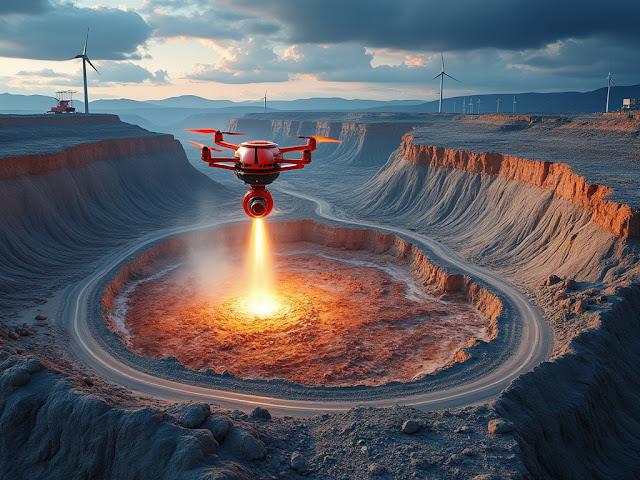According to new research by Australia’s Monash
University and the University of Tasmania, integrating AI could revolutionise
the extraction of minerals essential for clean energy and electric vehicles,
helping nations overcome barriers to the net-zero emissions targets set by governments and mitigate the
looming mineral supply shortfall.
THE WORLD is at risk of an insufficient supply
of critical and rare minerals essential to meet government deadlines for clean
energy, electric vehicles, and batteries for solar energy, unless the mining
sector adopts artificial intelligence (AI), according to research from Monash
University and the University of Tasmania.
In a paper published in Nature
Communications, their researchers suggest that AI can revolutionise the mining of minerals such
as copper, lithium, nickel, zinc, cobalt, and rare earth elements, all of which
are crucial for clean energy technologies.
Critical and rare minerals are vital for
achieving net zero emissions by 2050. However, the International Energy Agency
(IEA) has highlighted that it takes 12.5 years to transition from exploration
to production, making investments appear risky. The IEA estimates that a US
$360-450 billion investment is required by 2030 to meet a projected supply of
US $180-220 billion, indicating a potential shortfall of up to US $230 billion.
This shortfall could hinder future supply,
increase the cost of decarbonisation efforts, and potentially slow them down.
The research suggests that AI could address these challenges by improving
processes like mineral mapping through drone-based photogrammetry and remote
sensing, accurately calculating mine lifespan, and enhancing mining
productivity, including drilling and blasting performance.
The Role of AI in Managing Investment Risks
AI can also reduce the required rate of
return on investment by forecasting the risk of cost overruns and improving
equipment planning, predictive maintenance, and management to minimize repairs.
Associate Professor Joaquin Vespignani from
the Tasmanian School of Business and Economics at the University of Tasmania
noted that their research introduces the concept of a back-ended risk premium,
which refers to the additional risk for investors in critical mineral projects
with unaddressed technical and non-technical barriers, particularly those
involving lithium and cobalt.
The back-ended risk premium raises the cost
of capital and could reduce investment in the sector. However, advancements in
AI may reduce this risk premium by shortening the duration of mining projects
and lowering the required rate of investment by mitigating associated risks.
The researchers conclude that substantial government investment in AI mining
technologies and research is essential to lower the costs of energy transition
and prevent clean energy initiatives from becoming prohibitively expensive.
Australia’s Strategic Position in Asia’s Mineral Supply Chain
In Asia, Australia holds a significant
advantage with the world's largest proven reserves of nickel and zinc, the
second largest reserves of cobalt and copper, and the third largest reserves of
bauxite. Additionally, Australia is the leading producer of bauxite and lithium
and ranks third in cobalt production.
To capitalise on these resources, AI must
be integrated throughout the mining process, according to Deputy Dean of
Research at Monash University, Professor Russell Smyth. He emphasised that AI
can make the mining industry more efficient, cost-effective, less risky, and
environmentally friendly.
+++
For more details, refer to the full paper
in Nature Communications: "Artificial intelligence investments reducerisks to critical mineral supply" (DOI: 10.1126/sciadv.ado6566).

